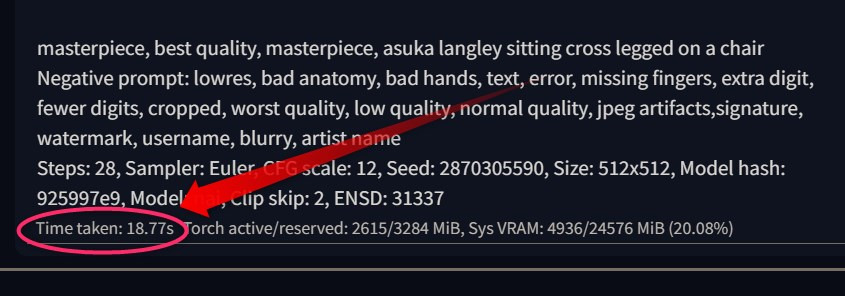Intel Extreme Memory Profile, also known as XMP, is a feature that users must enable to use RAM at advertised speeds. XMP was also previously used on AMD motherboards, but is now called DOCP/EXPO on AM5 socket motherboards that support the latest Ryzen 7000 series CPUs. Not running your RAM in XMP mode means you’re not using it at full speed. To enable this, users need to access the BIOS and find the setting to turn it on. This guide will help you do just that. With that said, let’s take a look at how you can enable XMP on your PC to increase RAM speed.
The method for enabling XMP to use RAM at higher clock speeds is the same for AMD and Intel, but newer AMD boards call the setting “DOCP” instead. But first, let’s understand what XMP is and then move on to our step-by-step guide. Read on to learn more about what RAM is and how it has evolved over the years. 
Step 1: Install the RAM module correctly
Before enabling XMP, please refer to our guide on how to install RAM on your PC and make sure all modules are installed correctly. This may seem trivial, but to ensure support for dual channel memory and XMP, the RAM must be installed in the correct slots , as specified in the motherboard manual. 
Step 2: Boot into BIOS mode
Then press the power button to start your PC. Press the key to enter BIOS mode. This is usually “F2” or “Delete” on most PCs. When you first start your computer, you will be presented with a key to enter the BIOS. If not, please refer to your motherboard manual or find the BIOS key on your motherboard manufacturer’s website. 
Step 3: Access RAM XMP settings
Inside the BIOS, navigate to the various menus to find the XMP feature. Sometimes called EXPO/DOCP/EOCP on AMD motherboards. The name is based on the motherboard manufacturer, so refer to that manual if necessary. XMP settings are usually found in the “Overclocking” section.
For the ASUS Z790-E Strix motherboard in my office, XMP was found under “AI Tweaker”. XMP settings were also available on the BIOS main page. Here you need to go to “AI Overclock Tuner” and select XMP II. The description stated that XMP II loads manufacturer-implemented profiles rather than additional adjustments. XMP is now enabled on your PC’s RAM.
If you enable the XMP feature, you may also see an “XMP” profile for your RAM. It lists the MHz frequency along with the memory timings. Select one using the arrow keys and press Enter to select.
If you know the highest RAM speed will work perfectly on your motherboard, go for it. However, if you are unsure, test the slow profile first and change the RAM profile later if necessary. 
Step 4: Save changes and exit BIOS mode
Next, go to the BIOS exit menu. Then navigate to the Save Changes and Restart option and press Enter. The PC will restart and apply the new XMP profile (Full Speed). The next section describes how to make sure your RAM is running at full speed. 
Step 5: Make sure your RAM is running at full speed
Let’s make sure XMP is turned on and the RAM is running at full speed. To do this, right-click on the taskbar on your Windows 11/10 PC. Next, open Task Manager. You can also use the Windows 11 keyboard shortcut “ Ctrl+Shift+Esc ” to open Task Manager.
Then go to Performance -> Memory . Here you will see the operating speed of your RAM as shown below.
What is XMP? Is AMD’s EXPO different?
For those wondering – why doesn’t RAM run at full speed by default? Because not all motherboards and processors can support overclocked RAM frequencies. When you purchase a memory kit and install it on your computer, it does not operate at maximum speed by default. Instead, RAM runs in the JEDEC profile. The JEDEC profile is the default memory profile unless modified.
You can modify your profile by turning on features such as XMP, DOCP, EOCP, and EXPO . They all essentially do the same thing. XMP refers to Intel’s Extreme Memory Profile . On AMD motherboards, this is called EXPO ( Extended Profile for Overclocking ), but on some other boards it is also called DOCP ( Direct Overclocking Profile ) or EOCP ( Extended Overclocking Profile ).
For example, a DDR4 RAM kit with a speed of 3200MHz will run at 2666MHz or less after the first system boot. Turning on XMP or DOCP/EXPO will run the RAM in an overclocking profile to achieve the maximum advertised speed as stated on the box. Turning on this feature changes the RAM timing and frequency.
In other words, XMP is a feature that allows RAM to run at full speed. This is essentially an “overclocking” profile for your RAM. RAM runs slow by default with the JEDEC profile. Manufacturers set XMP profiles with different speeds and timings based on RAM. Therefore, for RAM to run at full speed, XMP must be enabled in the BIOS.
Use RAM at full speed using XMP profiles
RAM running at substandard speed is a big problem faced by some users. However, after following the above steps, XMP will be enabled on your system and your RAM will run at maximum frequency. It’s not that difficult, right? This will allow your RAM to run at its native speed. To make your system even faster, read our guide on how to speed up Windows 11. It also includes methods to de-bloat the Windows OS, which can significantly speed up the process. If you have any doubts about how to enable XMP on your system, let us know in the comments below.
Enabling XMP on RAM: FAQ
Intel and AMD’s terms of service state that any kind of overclocking, including turning on XMP, may void the warranty. However, unless overclocking causes direct damage to the PC’s components, this policy generally doesn’t apply, so most people still use XMP.
In a sense, DOCP, EOCP, and AMD EXPO are the same as XMP. EXPO is essentially built by AMD for its own memory controller. However, XMP does the same thing as DOCP, ECOP, and EXPO.
No, the XMP profile is set by the manufacturer and will work fine as long as your PC can support the overclocked RAM frequency.
Yes, XMP is considered by manufacturers to be “overclocking” RAM.
If you are unable to enable XMP, please check if your motherboard supports the feature. If not, there is no way to overclock the RAM unless your BIOS supports manual frequency and timing settings.




![How to set up a Raspberry Pi web server in 2021 [Guide]](https://i0.wp.com/pcmanabu.com/wp-content/uploads/2019/10/web-server-02-309x198.png?w=1200&resize=1200,0&ssl=1)












































